Komentáře / Otázky (5)
![]() Iva napsala:
Iva napsala:
Hallo, Größe M Ich verstehe die Zunahmen bei dem Rumpfteil nicht. Mir wird gesagt ich soll alle 10cm insgesamt 3 Mal zunehmen, sprich wir haben nach 30 cm 152 Maschen auf der Rundnadel. Dann wird gesagt bei 27cm 23 Maschen aufnehmen, wir sollten 175 Maschen auf der Rundnadel haben. Ich finde es ist ein Widerspruch, da bei 30cm die Maschenzahl 152 ist, und bei 27cm die Maschenzahl 175 ist. Würde mich um Aufklärung freuen LG Ivanka
25.06.2023 - 11:14Odpověď DROPS Design :
Liebe Iva, die 1. Zunahme stricken Sie nach 4 cm, dann die 2. 10 cm später = 14 cm und die 3. 10 cm später: 24 cm; dann stricken Sie 3 cm (bis 27 cm) und nehmen Sie 23 Maschen regelmäßig verteilt zu (= auf einer Runde nehmen Sie von 152 auf 175 Maschen) dann Bündchen stricken. Viel Spaß beim stricken!
26.06.2023 - 08:48
![]() Frey Marie napsala:
Frey Marie napsala:
Bonjour, je voulais savoir pour une taille 42 Europe , je dois faire un M ou un L ? C’est pour offrir donc je n’ai pas les mesures . Merci pour votre aide
16.05.2022 - 14:46Odpověď DROPS Design :
Bonjour Mme Frey, les tailles sont toutes différentes d'une marque à l'autre, il est donc difficile de vous donner une taille type, l'idéal restant de mesurer un vêtement similaire, vous serez ainsi sûre de pouvoir choisir la taille qui convient correctement à la personne pour laquelle vous le tricoterez. Retrouvez plus d'infos ici. Bon tricot!
16.05.2022 - 16:49
![]() Ilona napsala:
Ilona napsala:
Non capisco come aumentare e lavorare secondo il motivo dopo aver lavorato il diagramma in verticale
16.05.2020 - 21:54Odpověď DROPS Design :
Buongiorno Ilona, a quale parte del modello e a quale diagramma fa riferimento? Buon lavoro!
17.05.2020 - 12:49
![]() Hanne Duli Olsen napsala:
Hanne Duli Olsen napsala:
Hei! :) Veldig søt, denne! Fant den i kveld, og ville begynne å strikke, men så er det ingen oppskrift på den. Når kommer den?
25.01.2020 - 23:24
![]() Betina Kauer napsala:
Betina Kauer napsala:
Sehr schönes Modell, ich freue mich schon auf die Anleitung.
21.12.2019 - 23:45
Cornflower Top#cornflowertop |
||||||||||||||||
 |
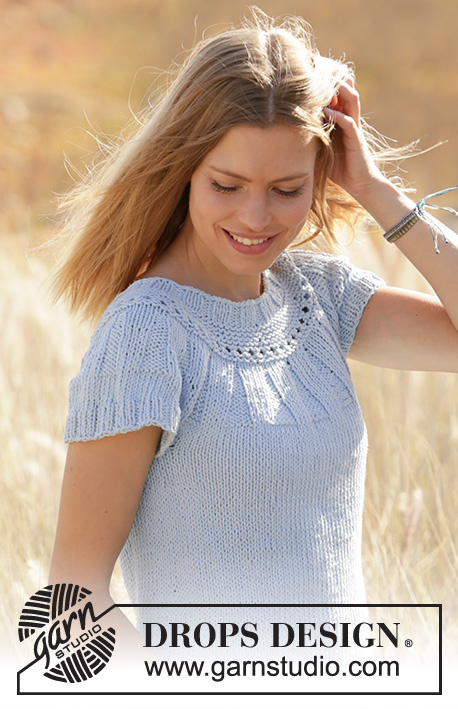 |
|||||||||||||||
Top - pulovr s krátkým rukávem a kruhovým sedlem s pružným a ažurovým vzorem pletený shora dolů z příze DROPS Paris. Velikost: S - XXXL
DROPS 210-31 |
||||||||||||||||
|
---------------------------------------------------------- VYSVĚTLIVKY: ---------------------------------------------------------- VZOR: Viz schémata A.1 až A.3. Zvolte si schéma pro požadovanou velikost (platí pro A.2 a A.3). TIP – PŘIDÁVÁNÍ 1: Abychom vypočítali, v jakých rozestupech máme přidávat, vydělíme celkový počet ok v řadě (např. 85 ok) počtem ok, která potřebujeme přidat (tj. 11), takže 85 : 11 = 7,7. V tomto případě tedy 1x nahodíme střídavě za každým zhruba 7. a 8. okem. V následující kruhové řadě pleteme nahození za zadní nit, aby se v pletenině netvořily dírky. TIP – PŘIDÁVÁNÍ 2 (boky trupu): Pleteme po poslední 2 oka před značkou, 1x nahodíme, 4 oka upleteme hladce (značka leží uprostřed těchto ok), 1x nahodíme. V následující kruhové řadě pleteme nahození za zadní nit, aby se v pletenině netvořily dírky. Nová oka pak pleteme lícovým žerzejem. TIP – UJÍMÁNÍ (rukávy): Ujímáme 1 oko na každé straně značky, takto – začínáme 3 oka před značkou: 2 oka spleteme hladce, 2 oka upleteme hladce (značka leží mezi nimi), 1 oko sejmeme hladce, 1 upleteme hladce a sejmuté přes ně přetáhneme. TIP - UZAVÍRÁNÍ: Abychom neměli uzavřený okraj moc stažený, můžeme na uzavírání ok použít silnější jehlici. Pokud ani to nestačí, pak 1x nahodíme za každým zhruba 5. okem – toto nahození hned uzavřeme jako běžné oko. ------------------------------------------------------- POPIS PRÁCE: ------------------------------------------------------- TOP - JAK BUDEME POSTUPOVAT: Lem průkrčníku a sedlo pleteme v kruhových řadách na kruhové jehlici, shora dolů, začínáme uprostřed zadního průkrčníku. Pak pleteninu rozdělíme na trup a rukávy. Trup pleteme dál v kruhových řadách na kruhové jehlici. Rukávy pleteme v kruhových řadách na ponožkových jehlicích/krátké kruhové jehlici, také shora dolů. LEM PRŮKRČNÍKU: Na kruhovou jehlici č.4 nahodíme přízí Paris 85-90-90-95-100-105 ok a upleteme 1 kruhovou řadu hladce. Pak pleteme pružným vzorem 3/2 (= střídáme 3 oka hadce, 2 obrace). Ve výši 3 cm převedeme pleteninu na kruhovou jehlici č.5 a označíme si začátek kruhové řady (= střed zadního průkrčníku). NYNÍ MĚŘÍME DÍL OD TOHOTO MÍSTA! SEDLO: Teď pleteme v kruhových řadách vzor A.1 a SOUČASNĚ přidáváme – viz TIP – PŘIDÁVÁNÍ 1. Postupujeme takto: v 1. kruhové řadě přidáme rovnoměrně 11-12-18-19-20-21 ok = 96-102-108-114-120-126 ok. ve 13. kruhové řadě přidáme rovnoměrně 14-18-22-21-20-24 ok = 110-120-130-135-140-150 ok. Po dokončení celé sekvence vzoru A.1 (na výšku) převedeme pleteninu na kruhovou jehlici č.5,5. Nyní pleteme vzor takto (zvolte si schéma pro požadovanou velikost): *1 oko vzorem A.2, 4 oka vzorem A.3*, *-* opakujeme v kruhové řadě celkem 22-24-26-27-28-30x. Po dokončení celé sekvence vzorů (na výšku) máme v kruhové řadě 198-216-234-270-280-300 ok. Pleteme dál, jak se oka jeví (tj. hladká hladce, obrácená obrace) až do výše 14-15-16-17-18-19 cm od značky. Díl dokončíme lícovým žerzejem. Ve výši 16-17-18-20-21-22 cm od značky přidáme rovnoměrně 8-8-10-4-8-16 ok = 206-224-244-274-288-316 ok. Pokračujeme lícovým žerzejem až do výše 18-20-22-24-26-28 cm od značky. Teď rozdělíme pleteninu na trup a rukávy – následující kruhovou řadu pleteme takto: upleteme prvních 29-32-34-38-42-47 ok (= polovina zadního dílu), následujících 45-48-53-60-60-64 ok odložíme na pomocnou jehlici (= rukáv), nahodíme 6-6-8-8-10-10 nových ok (= podpaží), upleteme 58-64-69-77-84-94 ok (= přední díl), dalších 45-48-53-60-60-64 ok odložíme na pomocnou jehlici (= rukáv), nahodíme 6-6-8-8-10-10 nových ok (= podpaží) a upleteme posledních 29-32-35-39-42-47 ok (= polovina zadního dílu). Trup a rukávy dokončíme odděleně. NYNÍ MĚŘÍME DÍL OD TOHOTO MÍSTA! TRUP: = 128-140-154-170-188-208 ok. Na každou stranu trupu vložíme značku, vždy doprostřed 6-6-8-8-10-10 nových ok v podpaží (= na každé straně značky máme vždy 3-3-4-4-5-5 nových ok). Mezi značkami leží 64-70-77-85-94-104 ok předního i zadního dílu. Značky během práce snímáme vždy do aktuálně pletené kruhové řady – využijeme je při přidávání. Pleteme v kruhových řadách lícovým žerzejem na kruhové jehlici č.5,5. Ve výši 4 cm (od podpaží) přidáme na obou stranách obou značek 1 oko – viz TIP - PŘIDÁVÁNÍ 2 (= přidáme 4 oka). Toto přidávání opakujeme vždy po zhruba 10 cm výšky, celkem 3x = 140-152-166-182-200-220 ok. Ve výši 27 cm (od podpaží) přidáme rovnoměrně 20-23-24-28-30-35 ok = 160-175-190-210-230-255 ok. Pak pleteninu převedeme na kruhovou jehlici č.4 a pleteme lem pružným vzorem 3/2 (= střídáme 3 oka hladce, 2 obrace). Když je lem vysoký 4 cm, všechna oka volně dle vzoru uzavřeme – viz TIP - UZAVÍRÁNÍ. Pulovr měří asi 53-55-57-59-61-63 cm (od ramene). RUKÁV: Odložených 45-48-53-60-60-64 ok jednoho rukávu vrátíme z pomocné jehlice zpět na krátkou kruhovou jehlici/ponožkové jehlice č.5,5 a navíc k nim nabereme po 1 oku z každého z 6-6-8-8-10-10 nově nahozených ok v podpaží = 51-54-61-68-70-74 ok. Upleteme 2 kruhové řady lícovým žerzejem – ppř. pleteme do potřebné výšky (do ukončení práce zbývá doplést asi 3 cm). Pak pleteme 1 kruhovou řadu hladce a SOUČASNĚ upravíme celkový počet ok na výsledných 50-55-60-70-70-75 ok (tj. pro velikost S a L 1-1 oko přidáme, pro velikost M, XL a XXXL přidáme 1-2-1 oka a pro velikost XXL nebudeme přidávat ani ujímat žádná oka). Pleteninu převedeme na ponožkové jehlice č.4 a pleteme lem pružným vzorem 3/2 (tj. střídáme 3 oka hladce, 2 obrace). Když je lem vysoký 3 cm, všechna oka dle vzoru volně uzavřeme – viz TIP - UZAVÍRÁNÍ. Stejným způsobem upleteme i druhý rukáv. |
||||||||||||||||
Vysvětlivky ke schématu |
||||||||||||||||
|
||||||||||||||||
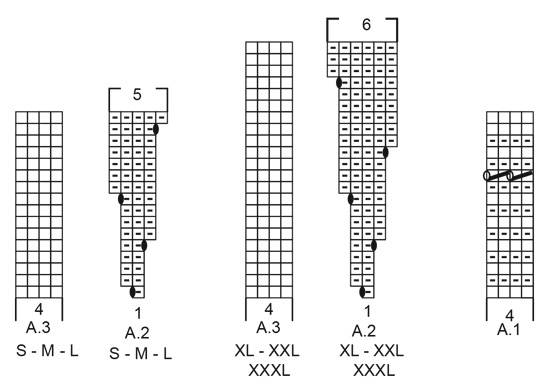
|
||||||||||||||||
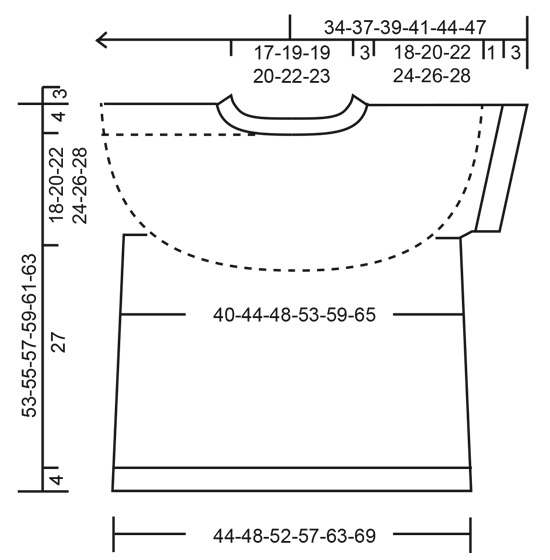
|
||||||||||||||||
Dokončili jste tento model?Pak označte své fotky tagem #dropspattern #cornflowertop nebo je pošlete do galerie #dropsfan. Potřebujete s tímto návodem poradit?Otevřete-li si návod na stránce garnstudio.com, najdete tam 23 výukových video-ukázek, Komentáře/Dotazy a další užitečné informace. © 1982-2025 DROPS Design A/S. Vyhrazujeme si veškerá práva. Tento dokument, včetně všech jeho dílčích částí, podléhá autorským právům. Podrobnější komentář k možnostem užití našich návodů najdete dole pod každým návodem na našich stránkách. |
||||||||||||||||







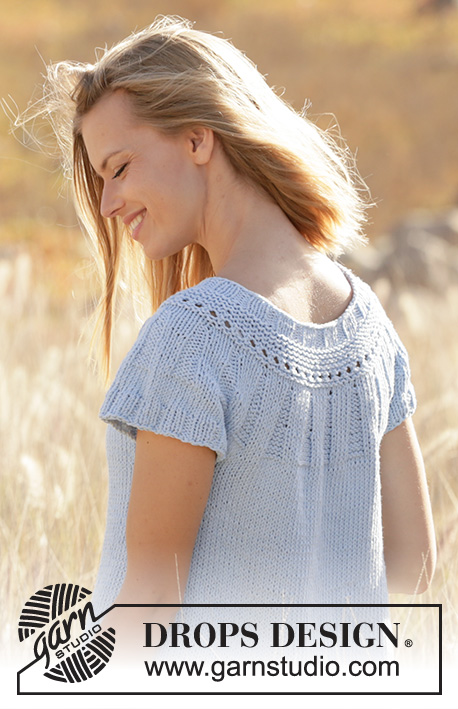
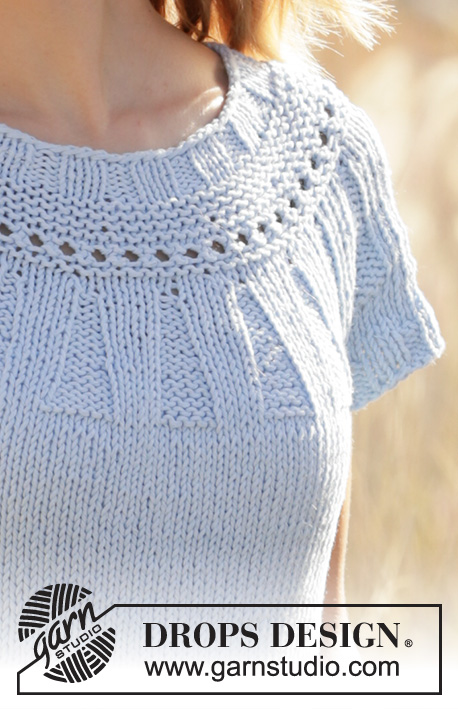
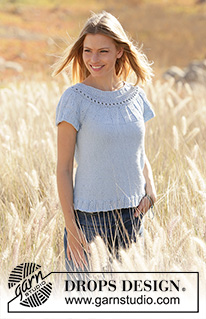
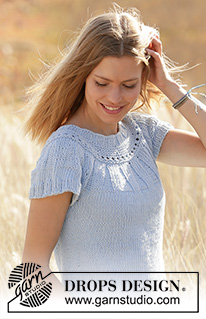
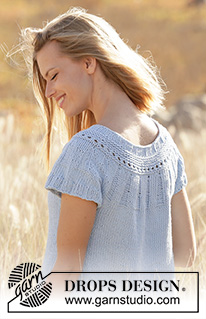
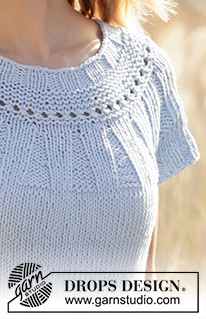






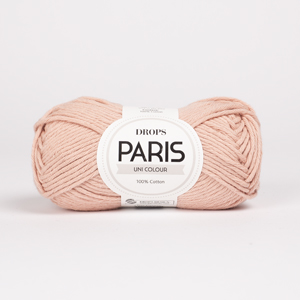
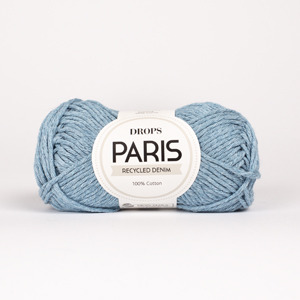
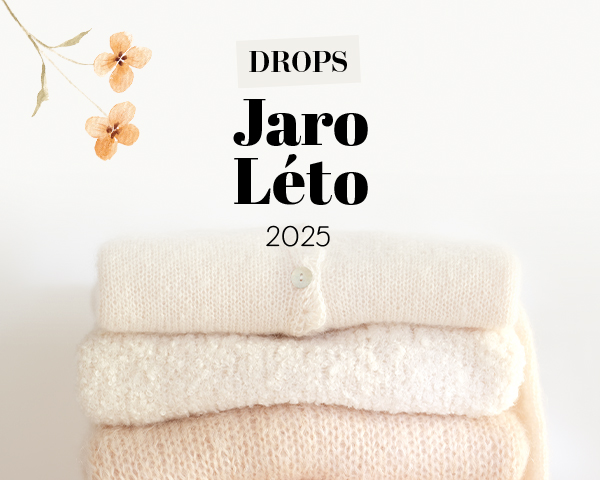

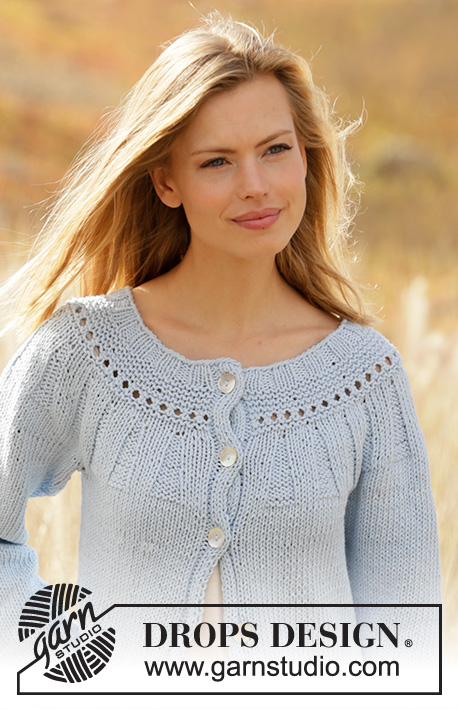









































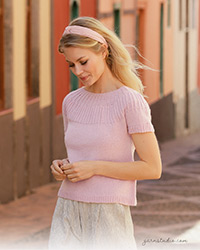
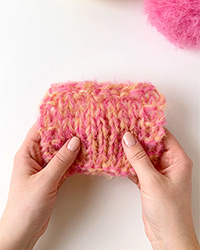
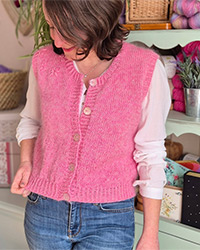
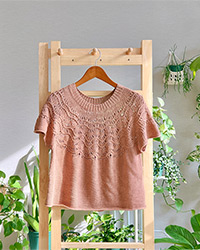
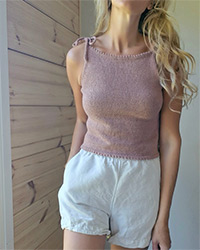

Přidejte komentář k návodu DROPS 210-31
Rádi bychom věděli, co si o tomto modelu myslíte!
Pokud se chcete na něco zeptat, dbejte prosím na to, abyste ve formuláři níže vybrali správnou kategorii - díky tomu se dříve dozvíte, co potřebujete vědět. Povinná pole jsou označena *.